
Chlamydia in dogs
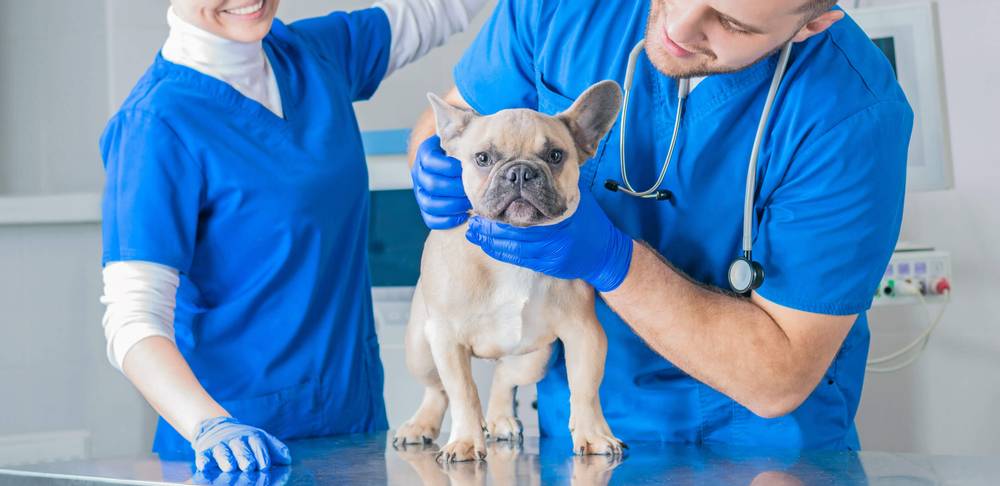
Contents
Chlamydia in Dogs: Essentials
Chlamydia in dogs is caused by tiny bacteria that behave like a virus.
Symptoms can be varied and depend on the form of the course of the disease, the most common include discharge from the eyes and nose, cough.
Most often, chlamydia in dogs has no clinical manifestations and proceeds hidden.
Treatment includes antibiotic therapy with a long course, local antiseptic preparations, drops, ointments.
The disease is potentially dangerous for humans, especially for immunocompromised people and pregnant women.
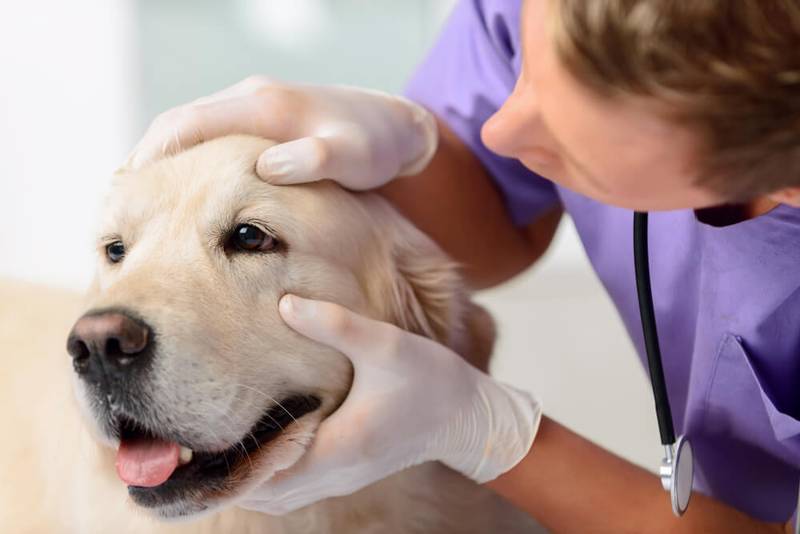
Causes of the disease
The main source of chlamydial infection is urban birds, most often pigeons. Ways of transmission of Chlamidia Psittaci are airborne and airborne. Dogs often show signs of infection after sniffing the droppings and carcasses of birds that have been infected with chlamydia. Alimentary infection, that is, through eating infected foods, is also possible, but less common. Dogs are highly susceptible to infection. Infection with Chlamydia Abortus mainly occurs sexually during mating, and can occur through feeding poorly processed meat to the dog. Also, the transmission of chlamydia in dogs often occurs from mother to fetus. There is evidence that infection is possible through the bites of blood-sucking parasites (mosquitoes, flies, ticks).
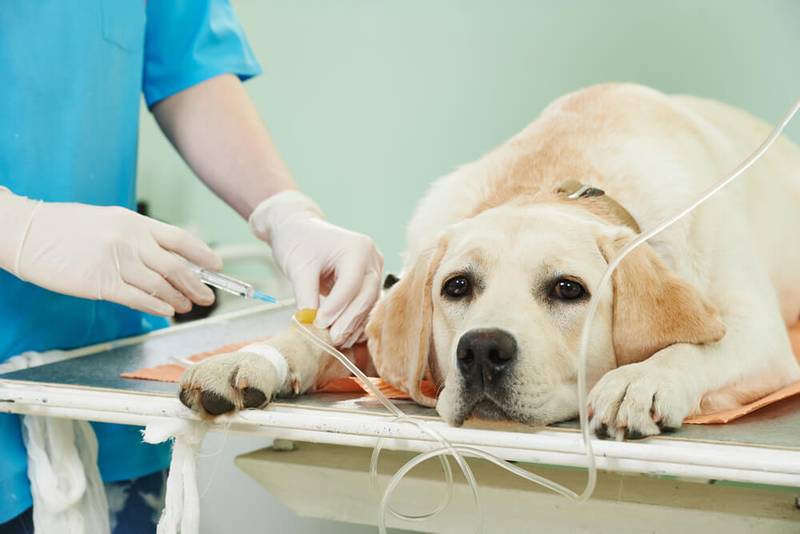
How does chlamydia get infected?
Chlamydia is a unique parasitic organism, in its structure it is between viruses and bacteria. It is classified as a virus by parasitism inside the cells of the host organism, and chlamydia is also not able to independently produce ATP (adenosine triphosphate) and feeds on the energy of the cell, which completely destroys it. Chlamydia refers to the presence of a cell wall, which allows the use of antibiotics to combat it. Chlamydia is also distinguished from all other bacteria by its special life cycle, which originates from the infection of host cells by phagocytosis.
Getting into the body, chlamydia is able to stay in two forms: elementary and reticular bodies. Elementary bodies are a spore-like form and have a strong shell. This shell makes them slightly sensitive to the action of antibiotics. In this form, chlamydia exist in the extracellular space. At this stage, chlamydia does not cause bright clinical symptoms and exists in the chronic form of the course of the disease. Cell division is slowed down, the release of various proteins is reduced.
Reticular bodies are the intracellular stage of the course of the disease. At this stage, chlamydia becomes sensitive to the action of antibiotics. In the body, it attaches to target cells (most often cells of the conjunctiva, genital organs). The cell engulfs the parasite by phagocytosis. Inside the cell, chlamydia creates a colony and feeds on the energy of the cell. Chlamydia divides, exits the empty cell, and then invades a new cell, and the cycle repeats. The cycle of development can last two or three days, during which time hundreds of new parasites are born.
Also, chlamydia can form special L-shapes. In this form, chlamydia is devoid of part or all of its cell wall. Because of this, it is difficult to influence it with the help of antibiotics, disinfectants and physical factors (temperature, ultraviolet). In this form, chlamydia is able to survive for a long time in the environment and inside a living organism and is difficult to treat.
In the external environment, the causative agent of chlamydia in dogs is relatively stable:
At an ambient temperature of 20-22 degrees, chlamydia lives for about 2 days, on the surface of a bird’s egg – 3 days, in the litter – 4 months;
When frozen to -20 degrees, chlamydia remains alive for up to 6 months, at -75 degrees it lasts up to a year or even more;
High temperatures quickly kill bacteria. At 60 degrees, chlamydia dies in 10 minutes, at higher temperatures – almost instantly;
To inactivate chlamydia, various physical and chemical means can be used: ultraviolet radiation, quartzization, disinfectants (2% chloramine is considered the most effective).
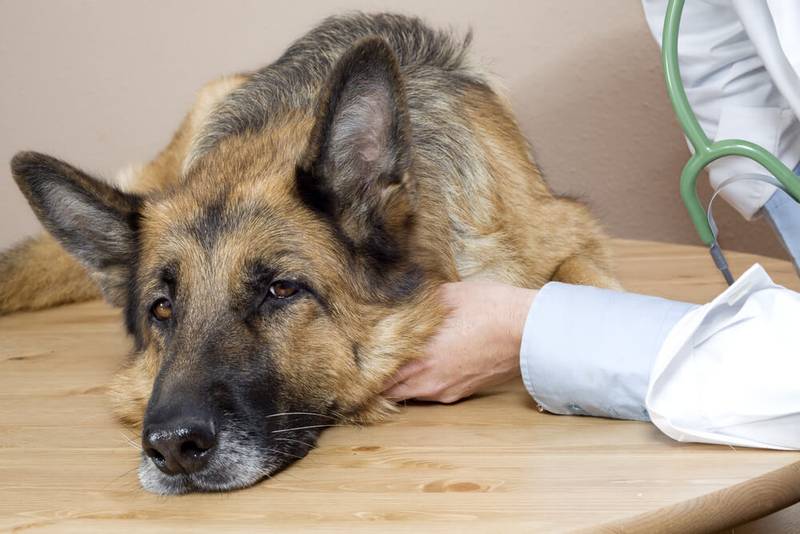
Symptoms of Chlamydia in Dogs
In most cases, chlamydia in dogs is latent, that is, it does not have any clinical symptoms, but the dog can be a carrier of the infection and infect others. Symptoms of chlamydia in dogs may begin to appear with a decrease in immunity or the addition of some other infection. Also, the degree of manifestation of clinical signs depends on the place of introduction of chlamydia into the body, existing other diseases, including chronic ones. Poor living conditions, chronic stress are also activators of infection.
Chlamydia can infect the organs of the respiratory system, genitals, organs of the urinary system and vision. Rarer manifestations of chlamydia in dogs include damage to the ears, cardiovascular and nervous systems. When the respiratory system is affected, conjunctivitis (inflammation of the mucous membrane of the eyes), rhinitis (inflammation of the nasal mucosa), tracheobronchitis (simultaneous inflammation of the trachea and bronchi), bronchopneumonia (simultaneous inflammation of the bronchi and lung tissue) can most often be diagnosed. When the genital organs are infected in males, orchitis (inflammation of the testicles), epididymitis (inflammation of the appendages of the testicles), prostatitis (inflammation of the prostatic gland) occur. In bitches – vaginitis (inflammation of the vagina), endometritis (inflammation of the uterine mucosa). Against the background of infection, cases of infertility are common. Pregnant females may experience abortions. Born puppies are weakened, have anatomical deformities, their sudden death is observed.
The incubation period for chlamydia in dogs in the event of infection is from 7 to 21 days, with an average of 2 weeks. During this period, the introduction of bacteria into the body occurs at the site of the entrance gate (usually the mucous membrane of the eyes, nose, genitals). Active division of chlamydia and cell death begins, toxins are released. At this time, the first clinical symptoms appear. They can include both specific symptoms and general ones (weakness, sluggish appetite, unwillingness to go for a walk).
Specific symptoms include:
Increase in body temperature up to 40-41 degrees;
Muscular (myalgia) and joint (arthralgia) pain;
feeling of nausea, vomiting;
Discharge from the eyes and nose (from mucous to purulent);
coughing, sneezing;
Redness of the whites of the eyes (injection of the vessels of the sclera);
Discharge from the prepuce in males and from the vulva in females (white-yellow to brown).
During this period, cells of target organs are affected, a state of reduced immunity occurs, and autoimmune reactions are formed. All this contributes to the long-term presence of bacteria in the body in different stages (reticular and elementary bodies, L-forms). Soon, third-party flora (mycoplasmosis, herpesvirus, various opportunistic bacteria) begins to activate, clinical symptoms become more diverse. There is inflammation of the joints, lymph nodes, liver, blood vessels, membranes of the heart, nerve tissues.
In the case of a chronic process, there may be periodic discharge from the eyes and nose, a decrease in fertility (the ability to have offspring) or the inability to endure and give birth to healthy offspring.
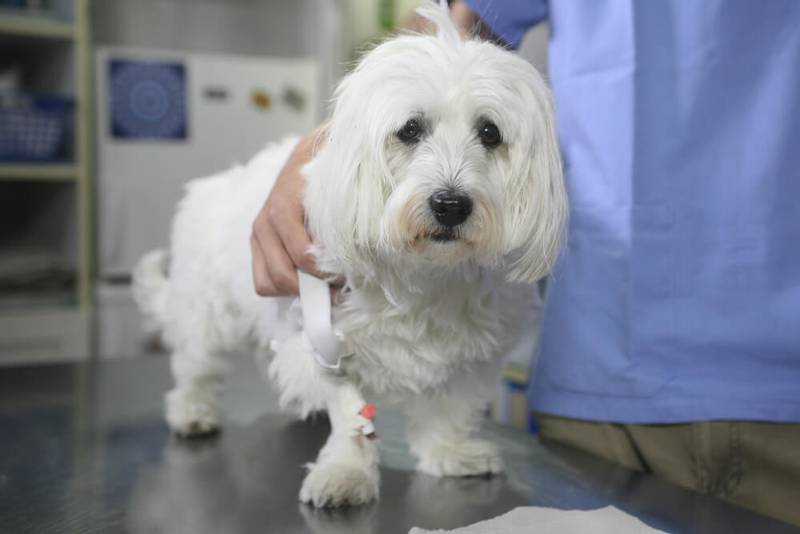
Diagnosis of chlamydia
The diagnosis of chlamydia in dogs is complex. Given the wide variety of clinical manifestations, diagnosis can be difficult. During the initial treatment, a detailed history is collected, the possibility of the dog’s contact with infected droppings or birds, eating raw meat, and sexual contacts with unexamined dogs is taken into account. General clinical and biochemical blood tests are carried out. In the general clinical analysis of blood, leukocytosis, lymphopenia can be detected. There are no characteristic changes in the biochemical analysis, but in a serious condition, deviations in the electrolyte composition and a decrease in albumin can be detected.
To confirm the diagnosis of chlamydia in dogs, a PCR test is performed. In the respiratory form, a swab is taken from the mucous membrane of the eyes, nose or throat. With urogenital – from the mucous membrane of the preputial sac in males or the vagina in females. The smear should be carried out using a cytobrush, a soft cotton swab is not suitable for this. This is due to the fact that chlamydia is located inside the cells, and not on their surface, and in order to detect it, cells from the surface of the mucosa must be “combed”. Also, to confirm chlamydia in dogs, a culture test can be performed, a special growth medium is used for sowing. On normal media, which are used for most cultures, chlamydia does not grow.
With arthritis, a puncture of the intraarticular fluid (synovia) is performed, its cytological examination, seeding for chlamydia. If you suspect a lesion of the internal organs, it is necessary to conduct an ultrasound scan, with which you can identify the degree of liver damage, enlarged lymph nodes, the condition of the uterus, prostate, testes. If necessary, magnetic resonance imaging or computed tomography may be prescribed.
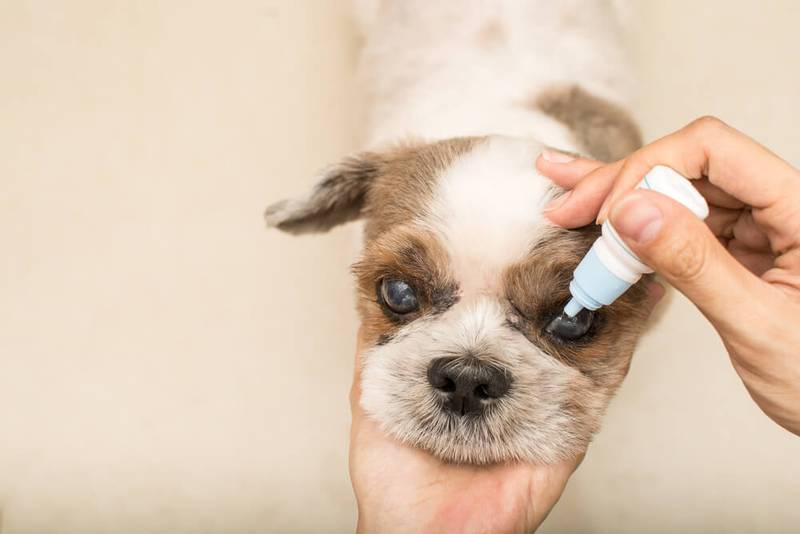
Features of the treatment of chlamydia in dogs
In no case should you start treating a dog for chlamydia on your own. The diagnosis in each case must be confirmed by laboratory. The treatment can be quite lengthy and have some side effects, so it should always be carried out under medical supervision.
The goal of chlamydia treatment is to eliminate the bacterium from the dog’s body; in some cases, it is only possible to achieve a transition from an acute condition to a chronic one. Also, the treatment will be aimed at normalizing the work of internal organs and systems, increasing immunity and protective properties of the body.
Etiotropic treatment, that is, aimed directly at the destruction of chlamydia, includes antibiotic therapy. Antibiotics from the group of tetracyclines (doxycycline), fluoroquinolones (ciprofloxacin, enrofloxacin, marbofloxacin), macrolides (josamycin, azithromycin) are used. The duration of admission is usually at least 3 weeks, a shorter intake may threaten a relapse of the infection. The dosage and choice of the drug depend on the age of the animal, the severity of the process, the existing secondary diseases, the tolerance of the treatment to the animals.
In the presence of severe conjunctivitis, eyewashes with hygienic lotions, local antiseptic or antibacterial drops can be prescribed. In case of detection of rhinitis and copious discharge from the nose, rinsing of the nasal cavity with saline solutions is used, the use of vasoconstrictor drops may be indicated. If a cough is noted, sputum thinners that inhibit the cough reflex may be recommended. With secretions from the genital organs, douching with antiseptic solutions is prescribed.
In severe cases of chlamydia in dogs, stationary monitoring of the pet’s condition can be indicated, if necessary, water-electrolyte fluids are used in the form of droppers, vital signs are monitored (temperature, blood pressure, respiratory rate are measured, electrocardiography is performed, electrolyte levels are measured and blood gases).
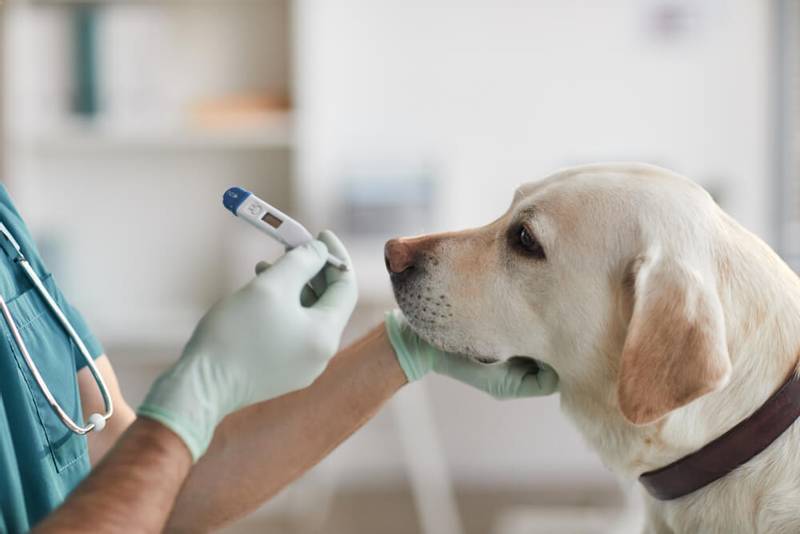
Is chlamydia dangerous to humans?
Chlamydia can be contagious to humans. An affected dog is a potential source of human infection with Chlamydia Psittaci. In humans, the disease chlamydia can also be called psittacosis (psittacosis). It can be especially dangerous for pregnant women, infection threatens with serious consequences: miscarriages, infertility, fetal abnormalities. For other people, especially people with reduced immunity and the elderly, chlamydia is also dangerous, it can cause chronic inflammation of the genital organs, arthritis. When working with a sick dog and caring for it, be sure to follow all possible preventive measures: use protective equipment, observe personal hygiene, and if any symptoms appear, immediately consult a doctor and conduct examinations.
4 May 2021
Updated: July 24, 2021





